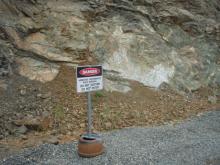- Home
- Practical guidance
- Homeowners and home renovators
- Tips when home renovating
Asbestos
Tips when home renovating
If it is in good condition (e.g. undamaged), can you leave it alone? (Can it be painted, covered to avoid removal?)
Remember, before starting a DIY job with asbestos consider:
- Do you know the alternatives to removing the material containing asbestos (e.g. painting or sealing, covering with a non-asbestos product)?
- Can you comply with the laws and safe procedures for working with asbestos?
- Should you use a licensed asbestos removalist?
Think of your family and your neighbours. When planning your work, don't forget your family and neighbours. Under public health laws, you have a responsibility to make sure that you protect their health by not releasing asbestos fibres into the air during your work.
You should also speak to your neighbours about the work you are about to do. It is particularly important to explain the safety precautions you will be taking to minimise the chance of asbestos fibres getting into the air.
Look, check and prepare before doing any renovation work in a building.
As a homeowner or owner-builder, you can remove 10 square metres or less of non-friable (also known as bonded) asbestos without a certificate. You must still take safety precautions.
If the amount is more than 10 square metres, you must obtain a certificate before removing it or engage a contractor who holds a current asbestos removal certificate.
You do not need a certificate for non-removal work (e.g. preparing a surface for painting, drilling a hole, removing tiles from a bathroom wall). You must still take precautions to prevent asbestos fibres getting into the air and following safe work procedures.
If removing an asbestos sheet:
- The work area should be cordoned off (e.g. with barrier tape) to ensure unprotected people cannot enter the area.
- Those people removing the asbestos sheet should wear suitable protective equipment (disposable coveralls and a P2 respirator).
- The asbestos material should be wet down prior to removal, except where this would be dangerous (e.g. on a roof).
- Damaging or breaking the bonded asbestos should be prevented. Keep activities to a minimum where damaged asbestos materials may be found.
- Plastic drop sheets should be used, and all surfaces then wet wiped after removal is completed (i.e. wiped over with a damp cloth).
- Decontamination of the people removing the asbestos will include disposing coveralls and wiping boots (with waste materials to be bagged in plastic) and showering to remove any dust particles on skin.
- Where possible, work should be performed in well-ventilated areas or in the open air.
Don't
- If a homeowner - use a power tool, or a device attached to a power tool, to cut or clean asbestos-containing material (ACM). A cordless drill operating at less than 650 rpm may be used if reasonable measures are taken to minimise the release of fibres.
- If a personal conducting a business or undertaking (PCBU) - use a power tool, or a device attached to a power tool, to cut or clean ACM, unless a method of capturing or supressing dust is used.
- Saw, sand, scrape or drill holes in asbestos materials. 240 volt power tools should never be used, as they are likely to disperse fibres into the air.
- Remove or repair asbestos materials without informing yourself of the appropriate methods for undertaking this work.
- Use abrasive pads or brushes on power strippers to strip wax from asbestos flooring.
- Walk or track material that could contain asbestos through the building.
- Dispose of asbestos waste in domestic garbage bins.
- Re-use, store, recycle or illegally dump asbestos products.

Downloads
- Asbestos: a guide for minor renovation [PDF 9.78 MB]
- Home
- General information
- What is asbestos?
- How was asbestos used?
- Are there health effects?
- The risks of exposure
- Health monitoring
- Legislation and codes of practice
- Low density asbestos fibre board
- Asbestos contaminated dust or debris
- Fires
- Cleaning up after floods and storms
- Importation prohibited
- Government and agency roles
- Asbestos in government assets
- Know where asbestos is
- Removing or disturbing asbestos
- Practical guidance
- Resources
- Asbestos alerts
- Asbestos news
- Codes of practice
- Guidance
- Films
- Asbestos safety session 2021
- Asbestos safety session 2020
- Cleaning Asbestos Roofs
- Shadow vacuuming with a H-Class vacuum cleaner
- Use and maintenance of a H-Class vacuum cleaner
- Identifying low density asbestos fibre board hazards and risks
- Working safely with asbestos for the home renovator
- How to properly wear personal protective equipment for airborne contaminants
- Personal protective equipment
- Dear Dad - An asbestos awareness film
- Clear and present danger: Asbestos exposed
- Uses and applications of asbestos - an extract from a film by Parsons Brinckerhoff
- Asbestos health issues - an extract from a film by Parsons Brinckerhoff
- Safe work procedure - storm and wind damage cleanup
- Drilling into asbestos walls and ceilings
- Asbestos - Removing switchboard panels
- Decontamination procedure, personal decontamination and cleanup procedures
- Asbestos awareness
- Safe work procedures
- Preparation before commencing the task
- Preparing and painting corrugated asbestos cement roof and fences
- Drilling into non-friable asbestos using a thickened substance to control airborne fibres and dust
- Drilling into non-friable ACM using an H rated industrial HEPA filter vacuum to control airborne fibres and dust
- Removing a small package electrical switchboard
- Cleanup and disposal
- Safe cleanup of storm damaged materials that may contain asbestos
- Frequently asked questions for homeowners and the general public
- Podcasts
- Strategies
- Working Safely with Asbestos Guide
- Asbestos awareness week 2025
- Asbestos management compliance campaign
- Induction and safety training for unlicensed work
- Sanctions